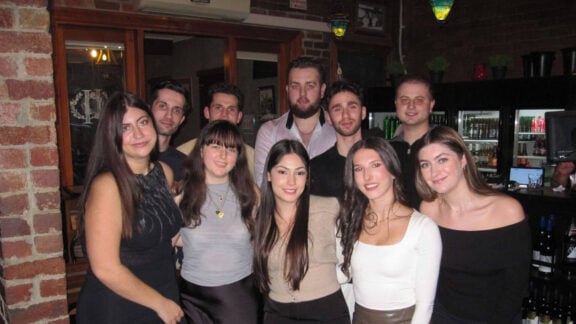A study conducted by the Aristotle University of Thessaloniki a few years ago extolled the benefits of Greek dancing. It found that those suffering from chronic heart failure who took up Greek dancing developed stronger legs and could walk further and jump higher than the sedentary group.
But Greek dancing is more than just about exercise.
A communal affair associated with joy and celebration, dancing brings people closer together and helps forge friendships and bonds among the dancers. Performed at weddings, baptisms, births and festivals, the goal of the Greek dances is to bring joy and unity.
Apart from the social element involved in joining a circle of dance, there’s a lot more to learn from the 4,000 traditional dances believed to exist. They teach us about our traditions and heritage. By studying local dances we gain greater insight into Greece’s development, history and geography.
The rhythm, beat and pattern of steps involved in the dances also help children’s mental and physical development, while also helping the aged delay memory loss and a decline in cognitive functions.
There’s more than meets the eye when it comes to Greek dance.
READ MORE: Free lecture: Maintenance of Greek cultural traditions and teaching of folk dancing in the diaspora
In fact there are almost as many benefits as there are dances. Here are some of the most popular Greek dances:
Kalamatianos
The kalamatiano is one of the best known dances of Greece. It is a popular Greek folkdance throughout Greece, Cyprus and internationally and is often performed at many social gatherings worldwide. As is the case with most Greek folk dances, it is danced in chain with a counterclockwise rotation, the dancers holding hands. There are 12 steps in the dance corresponding to 4 bars of music. These steps include 10 steps counterclockwise (“forward”) followed by 2 steps clockwise (“backwards”). Depending on the occasion and the dancers’ proficiency, certain steps may be taken as jumps or squats.
Sirtaki
Sirtaki was choreographed by Giorgos Provias for the 1964 film Zorba the Greek. As such, it is one of the newer dances and has a mixture of slow and fast rhythms of the It is a recent Greek folkdance, and a mixture of the slow and fast rhythms of the hasapiko dance. The dance and the accompanying music by Míkis Theodorakis are also called Zorbá’s dance, Zorbas, or “the dance of Zorba”. The name sirtaki comes from the Greek word syrtos – from σύρω (τον χορό), which means “drag (or lead the dance)”.
READ MORE: Young pianist plays Zorba at Doha airport and travellers are impressed [VIDEO]
Zeibekiko
It takes its name from the Zeybeks, an irregular militia living in the Aegean Region of the Ottoman Empire from late 17th to early 20th centuries. It was first seen at the end of the 17th century in cities such as Constantinople and Smyrni. Evliya Çelebi mentions in his writings that it was danced in Magnesia and in Aydın at local feasts.Originally a dance for two armed people facing one another, it developed into an improvised dance for a single male. These days women dance it too. Most of the steps are improvised and there is plenty of dancer interaction.
READ MORE: The 19-year-old Greek Australian bouzouki player who is a rising star on the music scene
Tsamiko
Typically performed by men, tsamiko is performed in a circle with the dancers holding hands. It comes from the areas of Peloponnese, Thessaly, Central Greece, whereas a slower version of Tsamiko is performed in Epirus.
Pentozali
This traditional ‘war dance’ comes from the island of Crete. It takes its name from the fifth (pente) attempt or step (ζάλος zalos being a Cretan Greek word for “step”) of Cretans to liberate Crete from Ottomans. The name can thus be translated as “five-steps”. Also in the spirit of wordplay, ζάλη zali means dizziness, and the name of the dance can also be understood (“five-dizzy”) as one that can make the dancers dizzy five times over. The dance has ten steps.









